S A Mahendran
Randomised controlled trial to evaluate the effect of foot trimming before and after first calving on subsequent lameness episodes and productivity in dairy heifers
Mahendran, S A; Huxley, J N; Chang, Y M; Burnell, M; Barrett, D C; Whay, H R; Blackmore, T L; Mason, C S; Bell, N J
Authors
J N Huxley
Y M Chang
M Burnell
D C Barrett
H R Whay
T L Blackmore
C S Mason
N J Bell
Abstract
The objective of this study was to assess both independent and combined effects of routine foot trimming of heifers at 3 weeks pre-calving and 100 days post calving on the first lactation lameness and lactation productivity. A total of 419 pre-calving dairy heifers were recruited from one heifer rearing operation over a 10-month period. Heifers were randomly allocated into one of four foot trimming regimens; pre-calving foot trim and post-calving lameness score (Group TL), pre-calving lameness score and post-calving foot trim (Group LT), pre-calving foot trim and post-calving foot trim (Group TT), and pre-calving lameness score and post-calving lameness score (Group LL, control group). All heifers were scored for lameness at 24 biweekly time points for 1 year following calving, and first lactation milk production data were collected.
Following calving, 172/419 (41.1%) of heifers became lame during the study (period prevalence), with lameness prevalence at each time-point following calving ranging from 48/392 (12.2%) at 29–42 days post-calving to 4/379 (1.1%) between 295 and 383 days after calving. The effects of the four treatment groups were not significantly different from each other for overall lameness period prevalence, biweekly lameness point prevalence, time to first lameness event, type of foot lesion identified at dry off claw trimming, or the 4% fat corrected 305-day milk yield. However, increased odds lameness was significantly associated with a pre-calving trim alone (P = 0.044) compared to the reference group LL. The odds of heifer lameness were highest between 0 and 6 weeks post-partum, and heifer farm destination was significantly associated with lameness (OR 2.24), suggesting that even at high standard facilities, environment and management systems have more effect on heifer foot health than trimming.
Citation
Mahendran, S. A., Huxley, J. N., Chang, Y. M., Burnell, M., Barrett, D. C., Whay, H. R., Blackmore, T. L., Mason, C. S., & Bell, N. J. (2017). Randomised controlled trial to evaluate the effect of foot trimming before and after first calving on subsequent lameness episodes and productivity in dairy heifers. https://doi.org/10.1016/j.tvjl.2017.01.011
| Journal Article Type | Article |
|---|---|
| Acceptance Date | Jan 11, 2017 |
| Publication Date | Feb 1, 2017 |
| Deposit Date | Apr 8, 2017 |
| Publicly Available Date | Apr 8, 2017 |
| Journal | VETERINARY JOURNAL |
| Peer Reviewed | Peer Reviewed |
| Volume | 220 |
| Pages | 105-110 |
| DOI | https://doi.org/10.1016/j.tvjl.2017.01.011 |
| Public URL | https://rvc-repository.worktribe.com/output/1393593 |
Files
10748.pdf
(822 Kb)
PDF
You might also like
Survey of cattle foot trimmer involvement in UK beef animal lameness
(2024)
Journal Article
Survey assessing foot trimmer involvement in managing lameness in UK beef cattle
(2024)
Journal Article
Calf health, feeding and social behaviours within groups fed on automatic milk feeders
(2023)
Journal Article
Downloadable Citations
About RVC Repository
Administrator e-mail: publicationsrepos@rvc.ac.uk
This application uses the following open-source libraries:
SheetJS Community Edition
Apache License Version 2.0 (http://www.apache.org/licenses/)
PDF.js
Apache License Version 2.0 (http://www.apache.org/licenses/)
Font Awesome
SIL OFL 1.1 (http://scripts.sil.org/OFL)
MIT License (http://opensource.org/licenses/mit-license.html)
CC BY 3.0 ( http://creativecommons.org/licenses/by/3.0/)
Powered by Worktribe © 2025
Advanced Search
